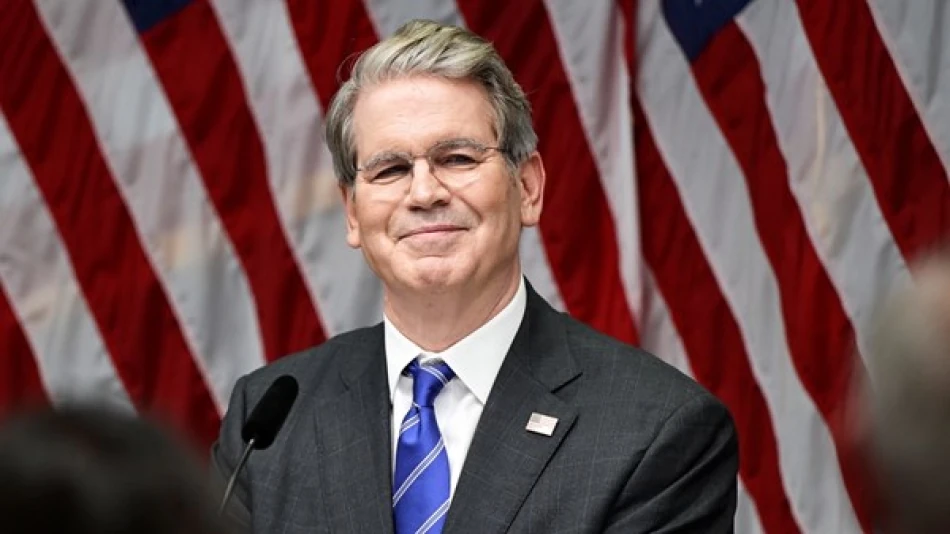
US Official Optimistic About Reaching Trade Deal with China
US Treasury Chief Signals Breakthrough in China Trade Talks After Stockholm Negotiations
US Treasury Secretary Scott Bessent expressed cautious optimism about reaching a comprehensive trade agreement with China following this week's negotiations in Stockholm, suggesting both economic superpowers may be closer to resolving their prolonged trade dispute and avoiding escalating tariff wars.
Behind the Deleted Tweet: A Strategic Signal
In a social media post that was later deleted, Bessent revealed that "this week's negotiations in Stockholm pushed our talks with China forward" and indicated he believes "we have the foundations for a deal that benefits both great nations." The deletion of such a significant statement raises questions about whether the comments were premature or part of a calculated diplomatic strategy.
The choice of Stockholm as a neutral venue for these discussions mirrors historical precedents where Sweden has served as a diplomatic bridge between major powers, suggesting both sides are serious about finding common ground away from the political pressures of Washington or Beijing.
Market Implications: A New Era of US-China Economic Relations
Immediate Financial Impact
Any substantive trade agreement between the world's two largest economies would likely trigger significant market movements across multiple sectors. Export-dependent industries, technology companies, and agricultural producers stand to benefit most from reduced trade barriers and tariff elimination.
Currency markets are particularly sensitive to US-China trade developments, with the yuan often strengthening on positive trade news while the dollar's safe-haven appeal diminishes during periods of reduced geopolitical tension.
Long-term Strategic Considerations
Unlike previous trade negotiations that focused primarily on bilateral trade deficits, current discussions likely encompass broader issues including technology transfer policies, intellectual property protections, and market access for financial services. These structural changes could reshape global supply chains that have been fragmented since 2018.
Historical Context: Learning from Past Trade Cycles
The US-China trade relationship has experienced multiple cycles of tension and reconciliation over the past two decades. The Phase One trade deal signed in 2020 ultimately fell short of its ambitious targets, with China purchasing significantly less American goods than promised due to pandemic disruptions and changing global demand patterns.
However, the current negotiations appear different in scope and approach. Rather than focusing solely on purchase commitments, both sides seem more interested in establishing sustainable frameworks for long-term economic cooperation.
Global Precedents: What Other Nations Have Achieved
The European Union's approach to China trade relations offers instructive parallels. Despite ongoing tensions over human rights and technology issues, the EU has maintained robust economic ties through sector-specific agreements and regular diplomatic engagement.
Similarly, Australia's recent experience demonstrates how quickly trade relationships can normalize when both sides prioritize economic pragmatism over political posturing. After years of Chinese trade restrictions, bilateral commerce has largely returned to pre-dispute levels.
Why This Time Could Be Different
Several factors suggest these negotiations may yield more durable results than previous attempts. Both economies face significant domestic challenges that could benefit from reduced trade friction. China's property sector struggles and demographic pressures make export growth increasingly important, while US inflation concerns make cheaper Chinese goods politically attractive.
Additionally, the global economic landscape has shifted considerably since 2020. Supply chain diversification efforts have reduced both countries' economic interdependence, potentially making compromise easier by lowering the stakes of any individual agreement.
The success or failure of these Stockholm talks will likely determine whether the world's two largest economies can establish a new equilibrium for the next decade, or whether they remain locked in a cycle of economic competition that constrains global growth and innovation.
Most Viewed News

 Layla Al Mansoori
Layla Al Mansoori






